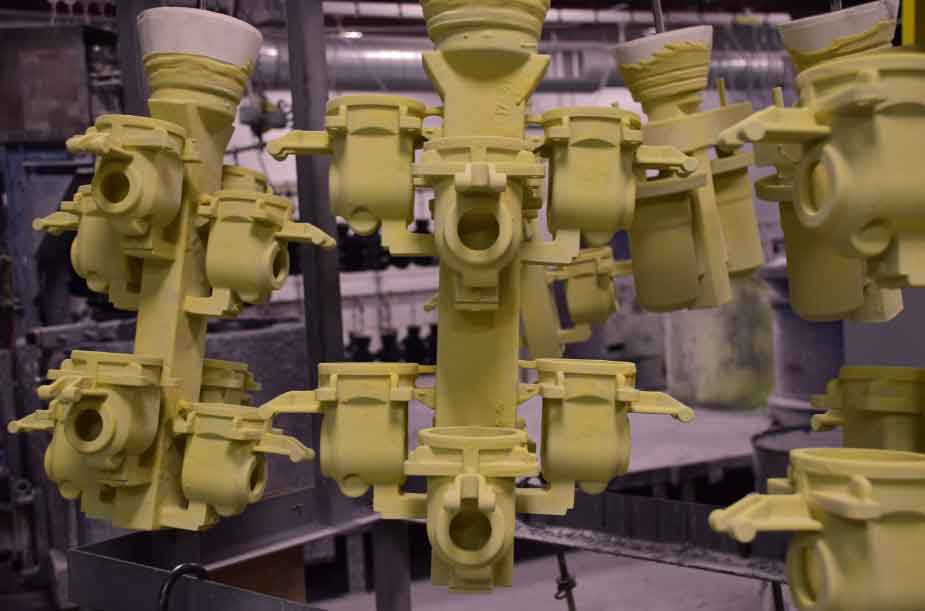Investment casting, also known as lost wax casting, is a multi-step process that transforms intricate designs into high-quality metal components. From the initial design stage to the final production, investment casting offers a versatile and precise method for creating complex parts. In this response, we will walk through the various stages involved in investment casting, highlighting the journey from design to the production of intricate metal components.

Design Stage:
The investment casting process begins with the design of the desired component. This stage involves creating a 3D model using computer-aided design (CAD) software. Designers can manipulate the model, refining and optimizing the geometry to ensure the component’s functionality and manufacturability. During this stage, considerations such as material selection, structural integrity, and dimensional accuracy are taken into account.
Wax Pattern Production:
Once the design is finalized, a wax pattern of the component is created. The wax pattern can be produced through two primary methods: injection molding or manual wax sculpting. Injection molding involves injecting molten wax into a pre-designed mold cavity to create multiple wax patterns efficiently. Manual wax sculpting, on the other hand, relies on the skill of craftsmen who shape and carve the wax by hand to achieve intricate details and precise forms.
Assembly and Gating:
In investment casting, multiple wax patterns are often attached to a central wax sprue, creating an assembly known as a wax tree or pattern cluster. The patterns are connected to the sprue using small wax rods called gates. These gates serve as pathways for molten metal to flow into the mold and provide a connection for venting gases during the casting process.
Investment or Shell Formation:
The wax tree is then coated with a ceramic shell through a process called investment or shell formation. The shell is built up in multiple layers. Each layer is formed by dipping the wax tree into a ceramic slurry and then coating it with fine ceramic particles, known as stucco. This process is repeated several times to achieve the desired shell thickness. The ceramic shell provides the mold cavity into which the molten metal will be poured.
Wax Removal and Preheating:
Once the ceramic shell is fully formed, the wax inside the shell is removed. This can be done by subjecting the assembly to high temperatures, causing the wax to melt and drain out, hence the term “lost wax casting.” The empty ceramic shell is then preheated to remove any remaining moisture and increase its resistance to thermal shock during the metal pouring stage.
Metal Pouring and Solidification:
The preheated ceramic shell is placed in a casting mold or flask, and molten metal is poured into the shell. The metal fills the cavity left by the wax pattern and takes its shape. The mold is then allowed to cool, causing the molten metal to solidify. The cooling rate is carefully controlled to minimize the formation of defects and ensure optimal mechanical properties of the cast component.
Shell Removal and Finishing:
After the metal has solidified and cooled, the ceramic shell is broken away, revealing the cast metal component. The component may require additional finishing processes, such as removing excess material, grinding, polishing, heat treatment, or surface coating, to achieve the desired final specifications. These finishing steps further enhance the component’s appearance, dimensional accuracy, and mechanical properties.
Quality Control:
Throughout the investment casting process, quality control measures are implemented to ensure that the final component meets the required standards. Inspection techniques such as visual inspection, dimensional measurements, non-destructive testing, and material analysis are employed to detect any defects or deviations.
Investment casting enables the transformation of intricate designs into complex metal components. From the initial design stage to the final production, investment casting involves the creation of wax patterns, assembly and gating, ceramic shell formation, metal pouring, shell removal, finishing, and quality control. The versatility and precision of investment casting make it a valuable manufacturing process in various industries, providing the capability to produce intricate and high-quality metal components.
